Bridges
Most of the material about bridges that used to be on this site has now moved - to:
http://suspensiondomes.com/.
This page indexes the few resources that still remain here.
Tensile bridges are the largest clear span structures in the world.
In the following diagrams, only the white struts are
intended to be capable of sustaining compressive loads -
all other elements are tensile.
Hyperboloid bridges
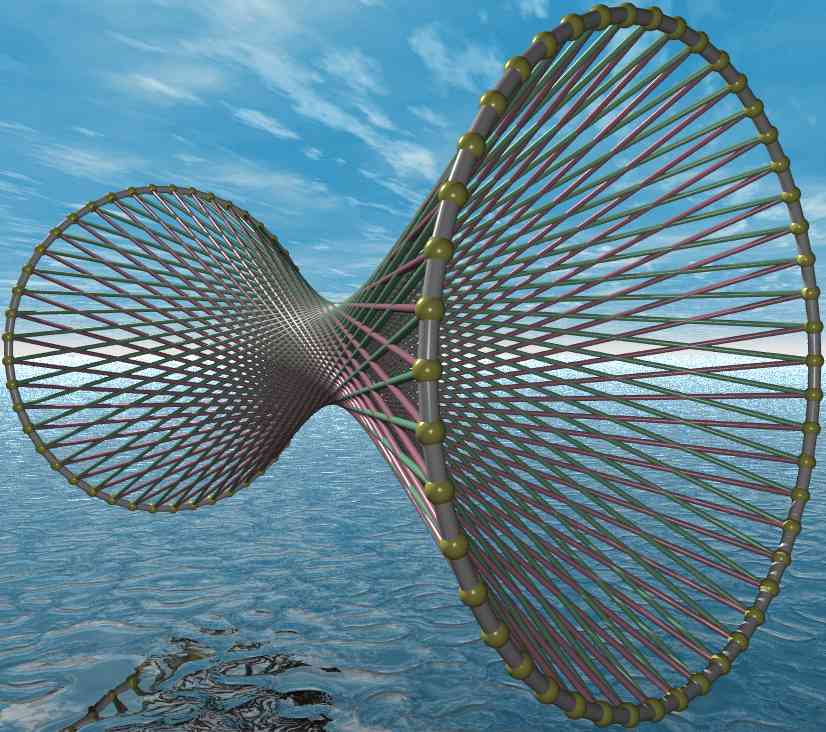
Hyperboloid bridge
The hyperboloid is a simple tensile structure, which I
believe has - or should have - substantial significance for
bridge builders.
The hyperboloid is one of the two "doubly ruled" structures.
Its surface consits entirely of straight lines, the roles of
which can be conveniently played by cables. The degree of
central constriction can be varied - by placing cables at
different angles.
Practical constructions often consist of two sets of cables
- one twisting to the left, the other twisting to the right.
The cables can be woven togther, using rectangular or triaxial
weaving patterns.
Also, the two sets of cables can sometimes be placed at
slightly different angles to the main axis of the bridge -
so that neither set of cables is quite straight. This
causes the two concentric sets of cables to press into each
other dynamically.
As far as I know only one hyperboloid bridge has been
constructed:
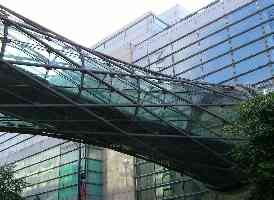
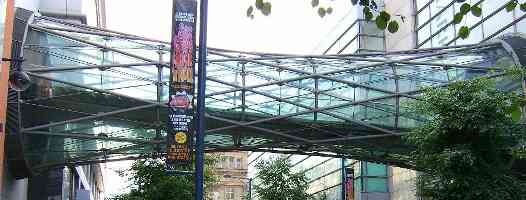
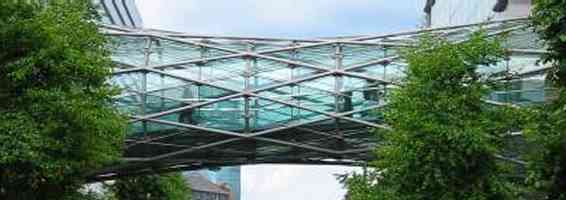

Hyperboloid towers - on the other hand - are more
common.

Segmented hyperboloid bridge
This consists of a series of hyperboloid strutctures chained together.
It represensts the principle of distributing the compression elements
along the length of the bridge - rather than concentrating them at
each end as is done in a suspension bridge.
There are pros- and cons to doing this.
As far as I know the best-known segmented hyperboloid
structure is a tower in Russia: the
[Shukhov
tower].
Aspension bridges
Another approach to constructing large-span tensile
structures exists. This has its roots in "Aspension"
structures - an idea which originated with Buckminster
Fuller.
Just as dome designers appear to have neglected "suspension"
principles, so bridge designers appear to have neglected
aspension designs.
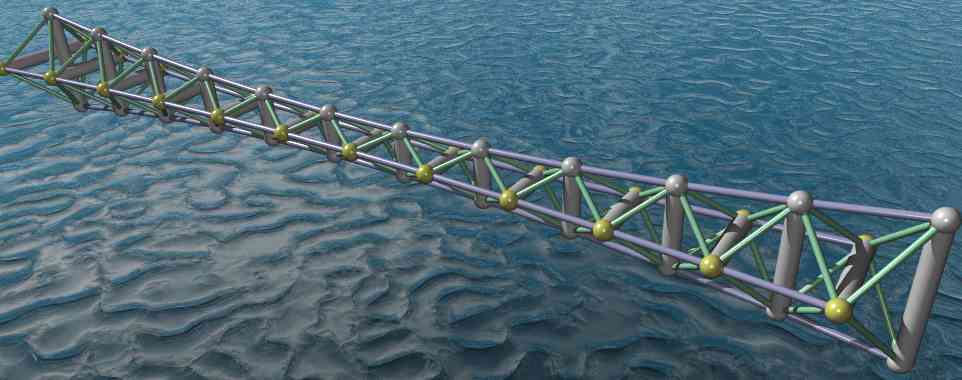
Simple segmented bridge
This is one of the simplest segmented bridges I can think of.
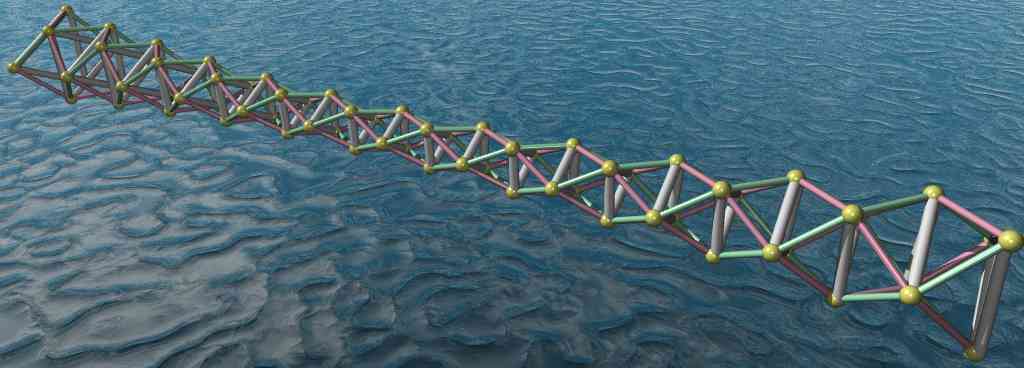
Face-bonded octahedral bridge
Here's a design based on the idea of face-bonding octohedra.
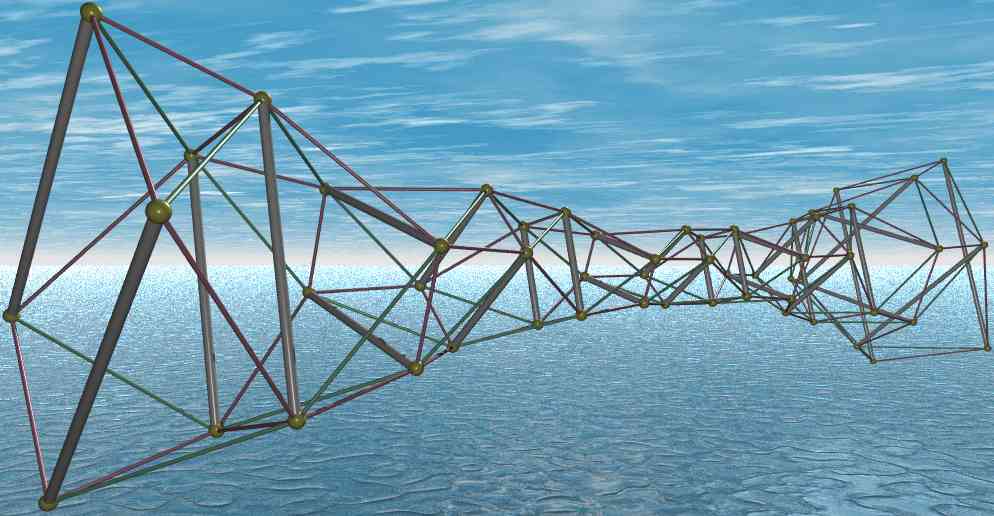
Twisting hexagonal bridge
This bridge has a more complex design. It offers a
significant unobscured central aperture.

Twisting hexagonal bridge
This bridge has a more complex design. It offers a
significant unobscured central aperture.
Links
Tensegrity tube bridge
|